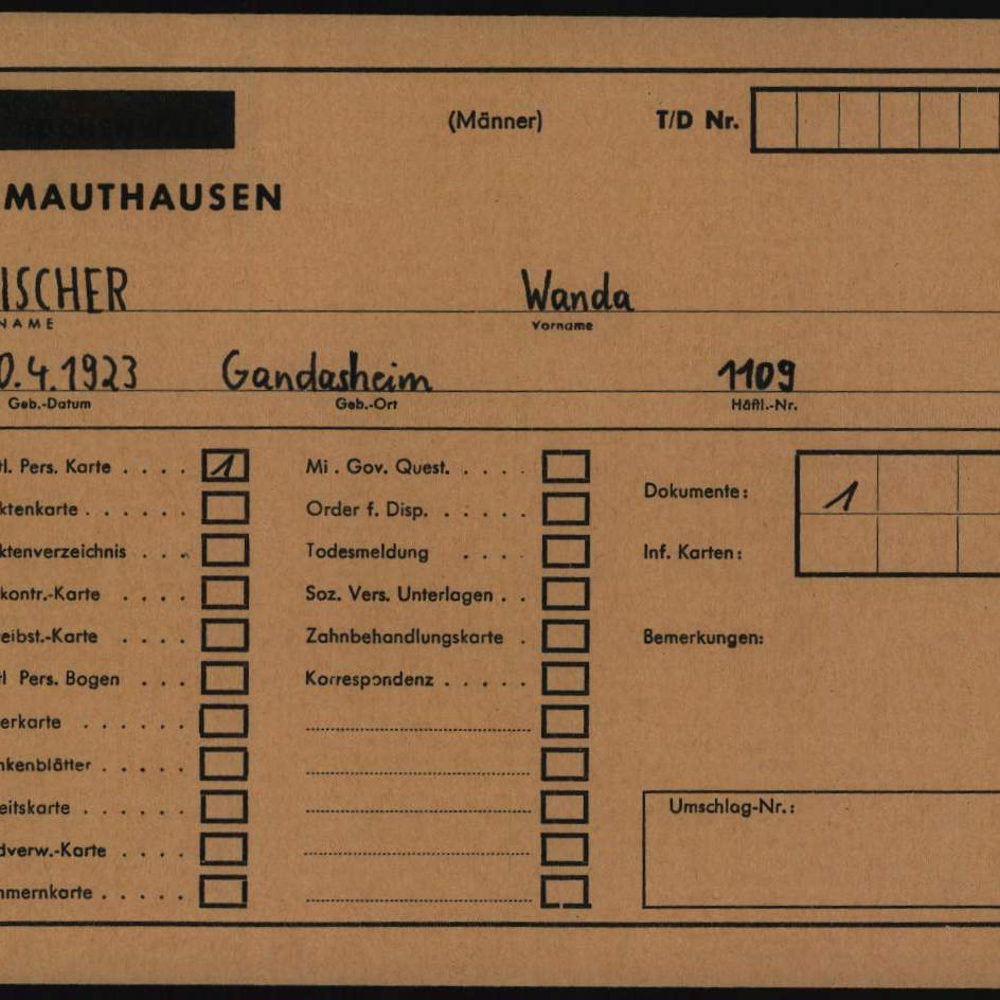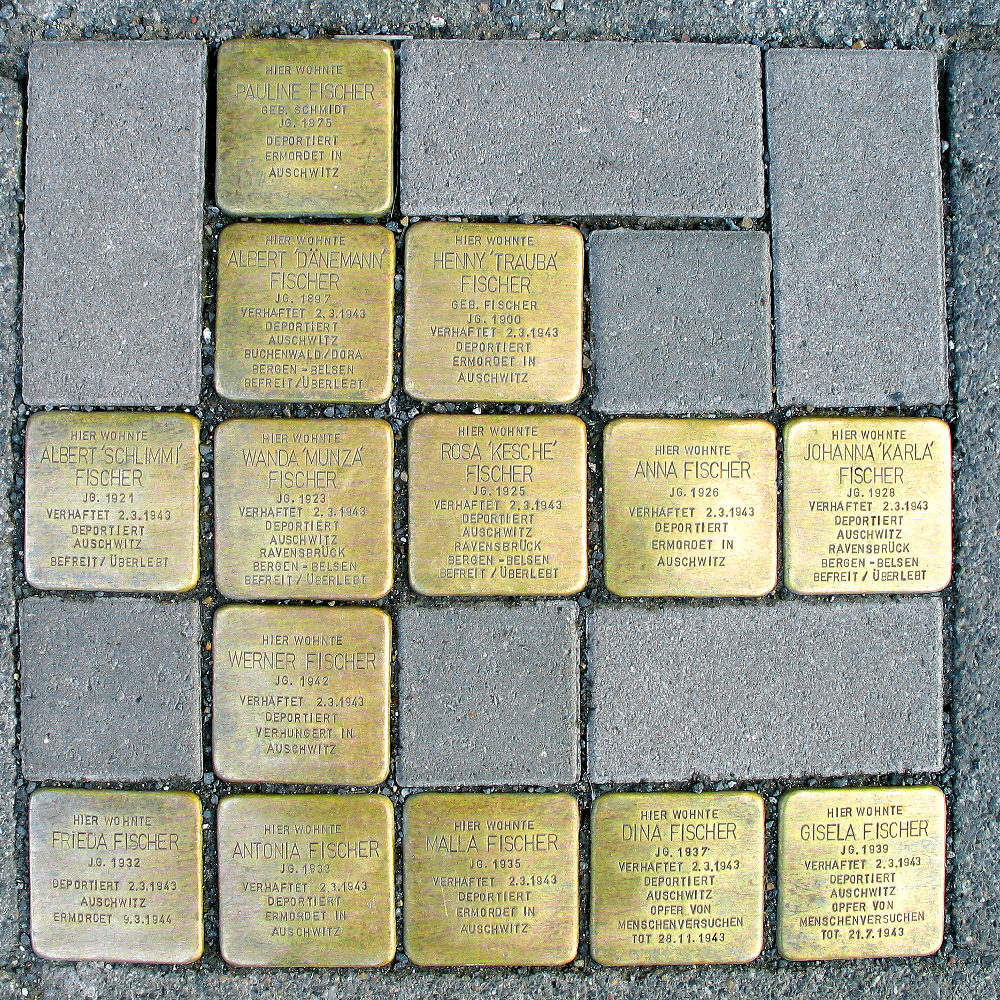Many Eastern European Jews and Sinti traditionally live in the modest housing in the Altstadt, such as in Röselerstrasse. The Fischers are a large Sinti family. They are deported from their home to Auschwitz on 3 March 1943. There, the mother is murdered along with the younger children.
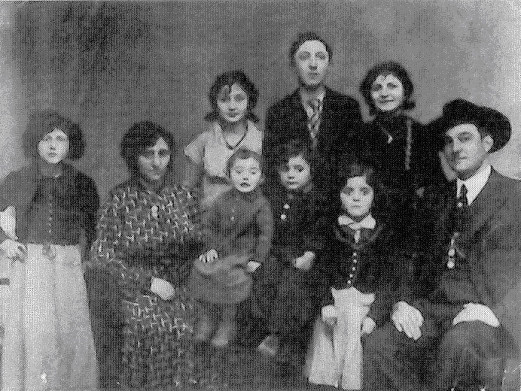
Residence registration card: “2 March 1943 all to Auschwitz (deported)”
In 1943, the Fischer family is one of about ten Sinti families left within the city limits. Much the same as the racist measures against Jews, the “Zigeunerpolitik”, the “Gypsy policy”, has gradually become more extreme: as early as October 1938, a large number of Sinti were deported from their campsite in Hainholz to Altwarmbüchen Moor on the outskirts of Hanover, where they were detained. In the early morning of 1 March 1943, the Sinti from the Altwarmbüchen moorland camp and from homes in Hanover are herded onto trucks by police officers and the following day, together with others, rounded up. At Fischerhof station in Linden they then board a deportation to Auschwitz.
„Familiensammellager“ Auschwitz
In the camp, they are all issued with consecutive numbers that begin with a “Z” for “Zigeuner” [“Gypsy”]. These are tattooed into the skin of their arms – or, in the case of the children, onto their legs because of the larger surface area. The train from Lower Saxony is one of the first transportations to reach the “family transit camp”, and as such, the prisoner numbers issued are low: Albert Fischer is given the number “Z 419”, while his sisters Wanda, Rosa, Anna and Johanna Fischer are given the consecutive numbers “Z 477-Z 480”, and so on. All are tagged with the black triangle designating them as “anti-socials”. Wanda’s fiancé and father of her child, Anton Pranden, is registered in Auschwitz on 27 March.
Forced labour, medical experiments, murder
Forced labour, malnutrition, diseases and epidemics, human experiments by camp doctor Josef Mengele and targeted murder campaigns result in the death of most of the prisoners. The eldest daughter of the Fischer family, Wanda Fischer-Pranden, loses her young son not long after. Two of her little sisters are among Mengele’s victims. From April 1944 onwards, prisoners are transferred for forced labour to other concentration camps such as Buchenwald (men) and Ravensbrück (women). Once the “Gypsy camp” is finally liquidated at the beginning of August 1944, the sick, the elderly and children are murdered in the gas chambers. Of the thirteen members of the Fischer family, five survive Auschwitz camp and the persecution that continued after that.
Transported from camp to camp
The father of the family, Albert Fischer, and his son who bears the same name, Albert (born in 1921), can be traced as prisoners of Kleinbodungen subcamp, which was subordinated to Mittelbau concentration camp in Thuringia. Here they carry out forced labour in a rocket repair facility for the V2 “miracle weapon”. On 11 April 1945, they are taken together with 650 men on the last transportation from camps forming part of the Dora complex to Bergen-Belsen concentration camp – which, in the period immediately prior to being liberated, is in effect a death camp.
Forced sterilisations
In the summer of 1944, sisters Rosa and Johanna Fischer and Wanda Fischer-Pranden are transported from Auschwitz to Ravensbrück concentration camp in northern Brandenburg. Wanda has to carry out harsh forced labour in Ravensbrück, including digging and laying rail tracks. As with many Sinti women, in the camp she is the victim of sterilisation, which is used as a form of systematic genocide: she is kept as a work slave, but is deprived of having children. Adolescent girls are also subjected to the procedure. Many die as a result of the operation.
Wanda Fischer-Pranden is temporarily transferred from Ravensbrück to Mauthausen concentration camp in Austria, before being transported back to Bergen-Belsen. This transportation on 19 March 1945 included a large number of Sinti also from Hanover like her and Charlotte Pranden-Weiss, who is listed in the Mauthausen camp records as her child.
Fight for compensation
If they managed to survive the genocide, in post-war Germany Sinti are particularly exposed to arbitrary treatment by the authorities and statutory provisions.
In compensation proceedings, it is not uncommon for them to encounter the same officials who were responsible for robbing them and discriminating against them during the Nazi era. The Federal German Indemnification Law of 1953 aims to compensate victims who were persecuted for political, racial, religious or ideological reasons during the National Socialist era. The above definition of reasons for persecution are often not allowed to apply to Sinti people because their registration and arrest are said to be a consequence of their “anti-social” behaviour and thus not a special feature of National Socialism.
Additional online information
The Persecution of Sinti and Roma under National Socialism – Resources from Lower Saxony [in German]
Wikipedia entry Gypsy family camp (Auschwitz)
Culture of Remembrance Stolpersteine installed in Hanover
Culture of Remembrance Information sheet The Fischer Family (PDF) [in German]
Further reading: Click here
Texts and images: Michael Pechel

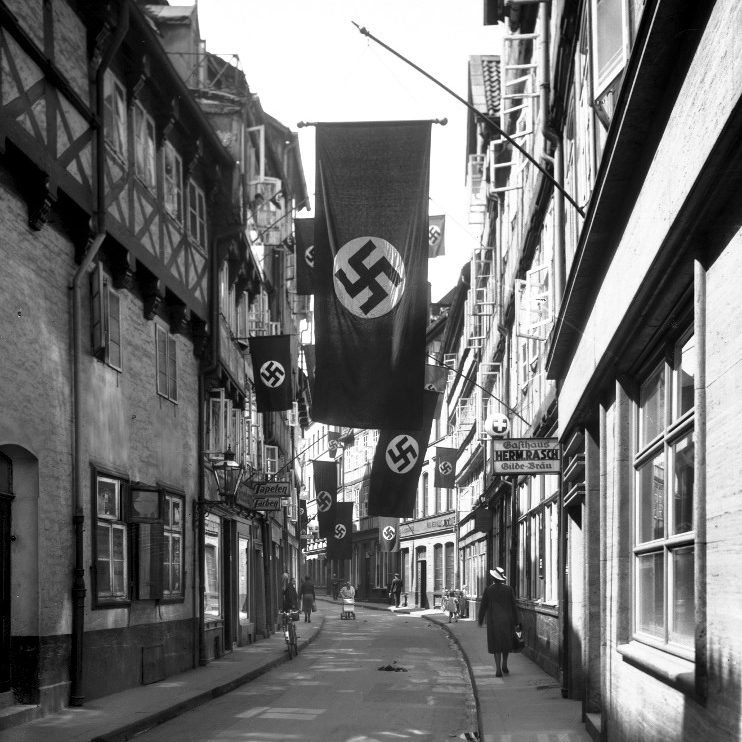
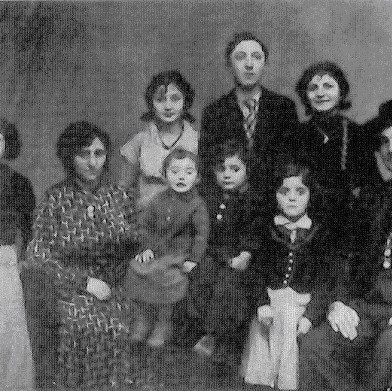
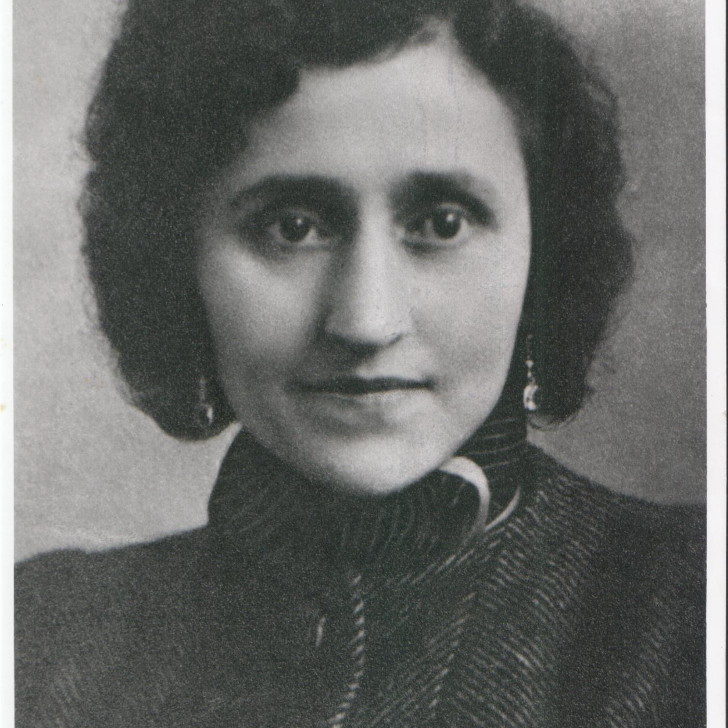
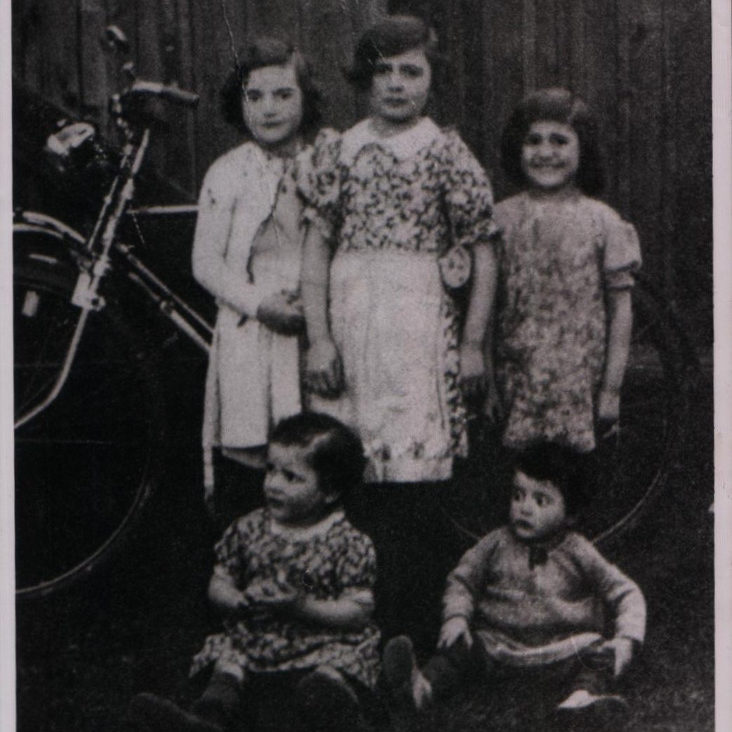
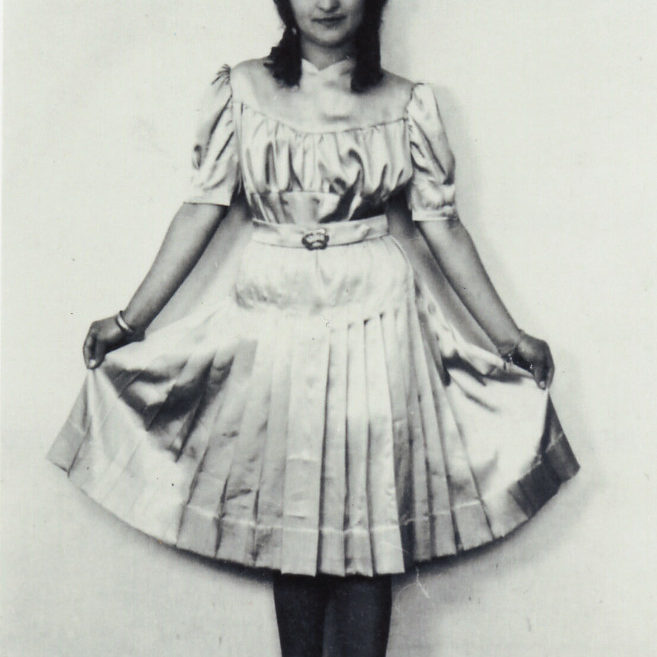
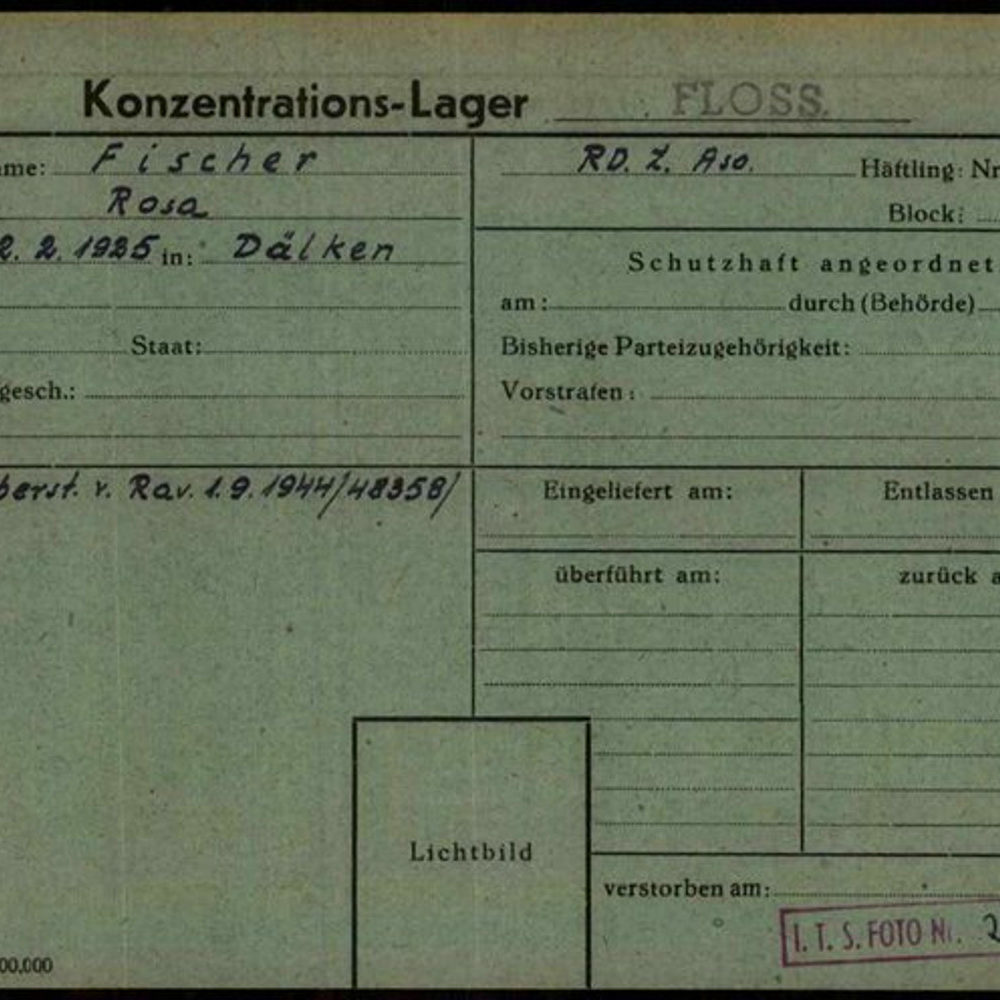
![Postal control card [i.e. record of incoming and outgoing mail of a prisoner] for Albert Fischer in Kleinbodungen concentration camp subcamp, Thüringen. Source: Postal control card Albert Fischer, Individual Prisoner Records – Mittelbau (Dora) concentration camp, 1.1.27.2 / 2592735 / ITS Digital Archive, Arolsen Archives](https://zukunft-heisst-erinnern.de/wp-content/uploads/2020/02/S_Fischer_7-1000x1000.jpg)
